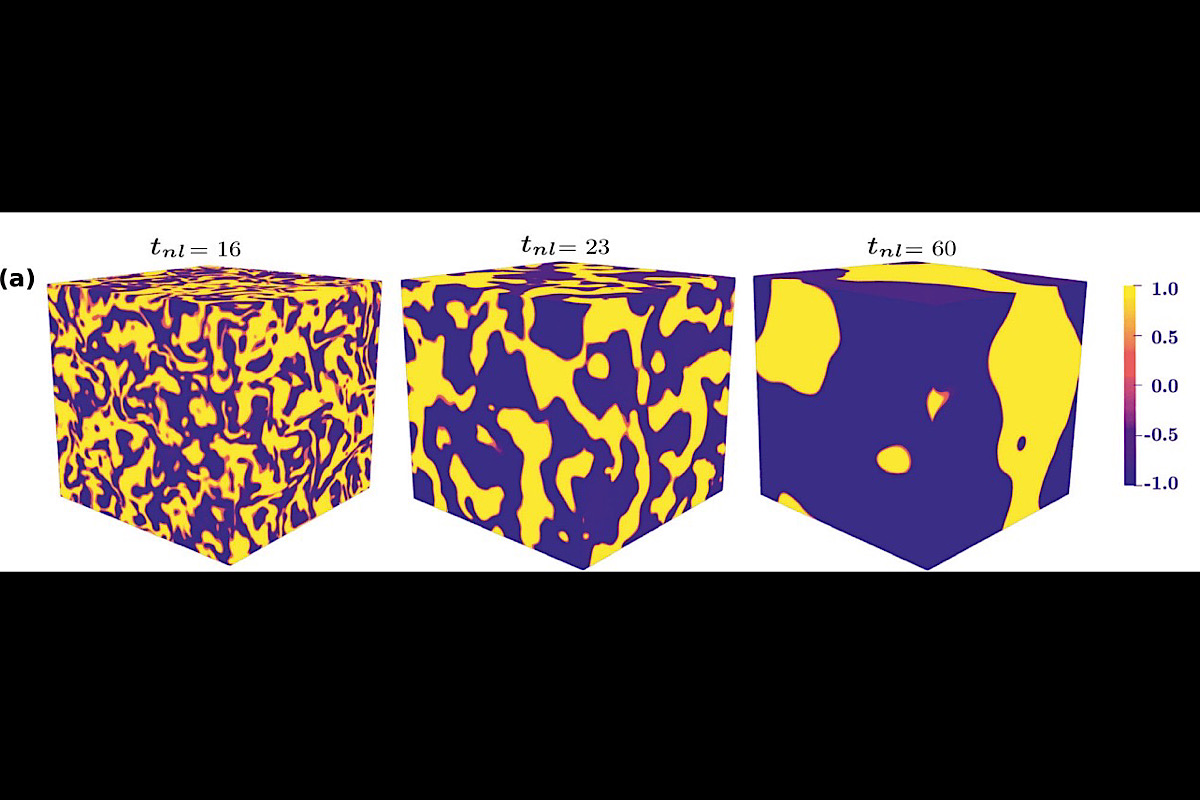Researchers from the Indian Institute of Technology Kanpur (IIT-K), have unveiled new insights into the process of relaxation of turbulent binary fluids in a new study published in the journal ‘Communications Physics’ by Nature Group.
This significant research on binary fluids, referring to a mixture such as oil and water, challenges existing theories of turbulent relaxation and opens new avenues in the practical application of binary fluid dynamics in science, engineering and various industries.
Upon vigorous stirring, a binary fluid becomes turbulent and forms an intermediate phase with cell-like structures.
The current study, led by Prof Supratik Banerjee, along with research scholars Nandita Pan and Arijit Halder from the Department of Physics, IIT Kanpur, explores the detailed process of how such a binary fluid relaxes when the stirring is withdrawn. This discovery by the IIT Kanpur team has profound implications for understanding and manipulating the properties of such fluids in industrial applications.
In particular, the research offers a quantitative analysis of how the bulk of each component fluid and their interface in a binary mixture relax back to a phase-separated state once the turbulence ceases. Interestingly, the relaxed state of the bulk turns up to be categorically different from that of the interface region. However, both relax through a universal pathway, namely the principle of vanishing nonlinear transfers (PVNLT) proposed by the same authors very recently (Banerjee, Halder and Pan, PRE Letters, 107, L043201, 2023).
Furthermore, this relaxation process in binary fluids, as per the findings of the study, significantly differs from that in single-fluid systems. This distinction can be attributed to the conservation of an additional quantity called the ‘scalar energy’, which is pivotal in understanding this relaxation process.
Prof Banerjee said here on Wednesday that , “The findings of our research hold immense potential for applications in industries such as food processing, pharmaceuticals, and cosmetics, where binary emulsions like mayonnaise, antacid emulsions, shampoos, and body creams are manufactured. The findings provide essential insights into the manufacturing and preservation processes. This can lead to more efficient production methods, reducing waste and costs. By understanding the unique relaxation properties of binary fluids, companies can optimise the stability and consistency of their products, ensuring longer shelf life and improved quality.”
He added, “Additionally, in pharmaceuticals, where the stability of emulsions is crucial for the efficacy of certain medications, this research can lead to enhanced drug formulations, ultimately improving patient outcomes.”
A notable aspect of the research is the challenge it poses to the widely accepted principle of selective decay, a theory that has long dominated understandings of turbulent relaxation but fails to account for finite pressure gradients in the relaxed state of binary fluids. The application of these findings in industrial settings will not only enhance product quality and sustainability but also drive innovation in formulation and processing techniques, potentially leading to the development of new products and applications.












